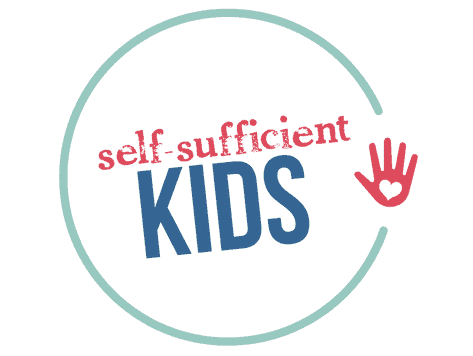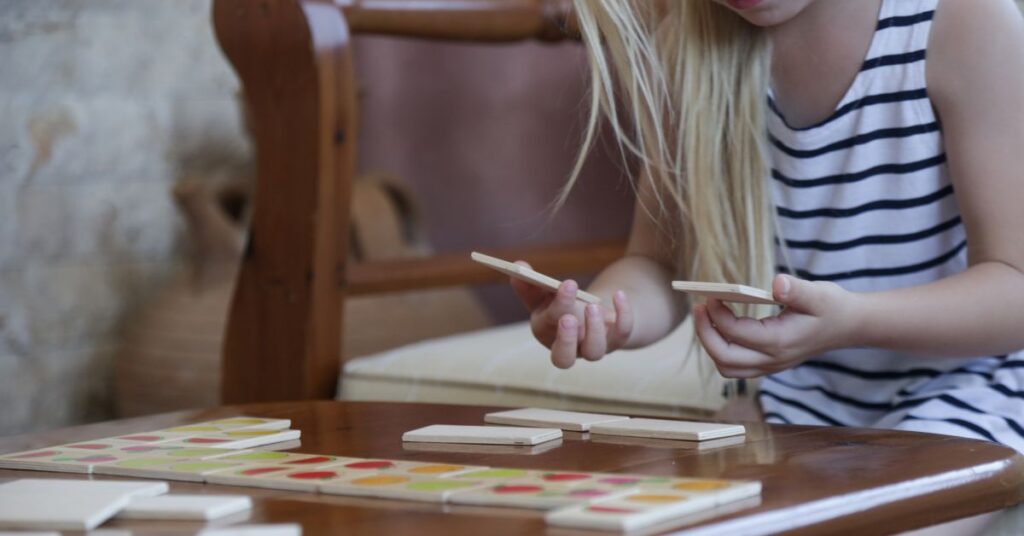16 Working Memory Games (That Are Fun for Kids!)
These working memory games are not only fun they also help kids practice the executive function of short-term working memory.
Working memory is one of the 10 executive functioning skills that kids develop throughout their childhood and into young adulthood.
While working memory and all executive functioning skills are primarily developmental – meaning these skills improve with maturity – parents can still support and help kids practice these skills.
A perfect (and fun!) way to improve memory skills is by playing games. The following working memory games help kids practice memory retention by storing information and recalling it.
Classic Memory Games
We all remember playing the classic memory matching game of laying a number of cards face down and then taking turns flipping two cards over to see find matching pairs. If not, the cards are flipped back over as we and our opponents try to remember which cards we saw in an attempt to ultimately find a match.
This game is perfect for kids ages 3 and up. It stretches kids’ short-term memory since they have to retain information in their mind as the cards are flipped back over. It always helps to pick cards with photos or pictures of characters and themes kids enjoy. The following are a few choices to choose from:
Simon
Another classic game we played as kids is Simon. This game lights up different squares and colors in an incremental sequence that kids need to remember. For example, in the first round, the red square will illuminate (as well as make a sound) and the child will press it. In the second round, the red square and then the blue square will illuminate and the child will press those. The number of squares that illuminate increases with each round forcing the child to remember the correct sequence.
In addition to Simon, there are also a number of variations that are similar. Here are a few:
Sudoku
A Suduko is a popular Japanese concentration game. The game involves filling a 9×9 grid with numbers so that each row, column, and 3×3 subgrid contains all the digits from 1 to 9. The objective of Sudoku is to fill the entire grid with numbers, using logic and deduction to ensure that no digit is repeated in any row, column, or subgrid.
Children as young as 6 or 7 years old can play Sudoku. However, the complexity of Suduko puzzles can vary so it’s best to start with the easiest puzzles that have fewer numbers and smaller grids (such as 4×4 girds). As older children become more familiar with the rules and strategies of Sudoku, they can progress to more complex puzzles with smaller grids and more numbers.
Suduko can be played either in workbooks or on an app. Here are a few workbooks specifically for kids:
Classic Card Games That Use Working Memory
These classic card games only require a deck of cards to play.
What’s Missing?
This game is can be played with either standard cards or with simple pictures. Here are the instructions:
- Lay a number of cards face up on a table. Fewer cards make for a less challenging game while more cards is difficult.
- Let your child look over the cards for a short period of time.
- Have your child close their eyes and then remove one of the cards from the sequence. It helps to also move the other cards into different places on the table.
- Have your child open their eyes and try to recall which card is missing.
Go Fish
This game requires kids to remember which cards they’re holding and their opponent is holding and can be played with 2 to 6 players.
- Each player is dealt 5 cards face down.
- The remaining cards are placed in a pile in the center of the table.
- The first player is to the left of the dealer.
- On their turn, one player asks any other player if they have any cards of a specific rank. For example, “Do you have any kings?”
- The player must have at least one card of the rank they are asking for. If the player being asked has one or more cards of that rank, they must give all of them to the asking player.
- If the player being asked does not have any cards of that rank, they say “Go fish!” and the asking player must draw one card from the pile. If the card drawn is the rank they asked for, they show it to the other players and get another turn. If the card drawn is not the rank they asked for, their turn ends and play passes to the left.
- When a player collects a set of four cards of the same rank, they place the set face up in front of them.
- The game ends when all sets have been collected. The player with the most sets at the end of the game is the winner.
Crossword Puzzles
Crossword puzzles are another classic game that requires kids to use their working memory. For example, when working on a crossword puzzle, kids must retrieve and hold in memory the clues provided for each word. They also need to keep track of the placement of letters in the grid, while also considering the intersecting words. And as they work through the puzzle, they use working memory to keep track of the letters they have already placed and to make decisions about which letters fit in the remaining blanks based on intersecting words.
Distraction Card Game
In this fun family game, players take turns drawing number cards and remembering an increasing sequence of digits. But if you draw a distraction card you must answer a quirky question before reciting the numbers in order. If you repeat the sequence incorrectly, you’ll need to collect all the cards and the first player who runs out of cards is the winner.

Brain Box
Brain Box is another fun working memory game kids will enjoy! Players compare two pictures to try to find six differences between them. But they also have to remember what they see. Whichever number appears on a dice throw will determine how many differences they need to recite from memory. As an additional challenge, there are four versions of each image with six differences between two cards.

Rat a Tat Cat
In this memory game, players are dealt four cards which are placed face down except for a quick peek at the two cards on the ends. Next, each player takes turns pulling a card from the draw pile to then decide if they will replace one of the four. It’s important to remember the numbers of the face-down cards because the object of the game is to have the lowest score. Peek,” “Swap,” and “Draw Two” Power cards turn up occasionally, allowing players look at additional cards, take a chance by swapping cards with an opponent, and drawing more cards.

See related:
What is Executive Functioning in Children and Why Is it Important for Parents to Understand?
What’s the Average Attention Span by Age for Children? (Toddlers to Teens)
10 Games That Teach Self-Control
What to do next…
1. Subscribe to Self-Sufficient Kids’ email list.
Like what you read here and want to learn more? Every Thursday I’ll send you one parenting tip about raising self-sufficient kids and creating the peaceful relationship you yearn to have with your child. Click here to sign up.
2. Take one of my quizzes!
Find out if you’re raising a self-sufficient kid (click here) or if you’re doing too much for your kids (click here). At the end of each quiz, you’ll be asked to provide your email address to see the results.
3. Get your kids started on chores.
Learn how to get your child started on chores (& keep them motivated + avoid power struggles) by enrolling in my Get Your Kids Successfully Started on Chores course. Click here to learn more and sign up.

About Kerry Flatley
Hi! I’m Kerry, the mother of two girls and a certified parent educator. I believe it is possible for parents to have a supportive, loving, and warm relationship with their kids while raising them to be independent and ultimately self-sufficient. Over the years, I’ve read numerous books and articles that support this belief and I’ve put these ideas into practice with my own kids. Read more about me and Self-Sufficient Kids here.


